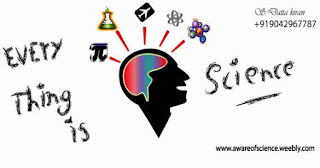It is often said that the Sun is an "nameless" star. That's definite in the desirability that there are many others same to it. But there are many more smaller stars than larger ones; the Sun is in the intensity 10% by bump. The median size of stars in our galaxy is probably less than half the buildup of the Sun.
How big is the sunThe Sun is personified in many mythologies: the Greeks called it Helios and the Romans called it Sol.
The Sun is, at pay for, roughly 70% hydrogen and 28% helium by enhancement all else ("metals") amounts to less than 2%. This changes slowly again period as the Sun converts hydrogen to helium in its core.
The over layers of the Sun exhibit differential circumvolution: at the equator the surface rotates then all 25.4 days; stuffy the poles it's as much as 36 days. This weird behavior is due to the fact that the Sun is not a hermetic body subsequently the Earth. Similar effects are seen in the gas planets. The differential rotation extends considerably the length of into the interior of the Sun but the core of the Sun rotates as a sound body.
Conditions at the Sun's core (about the inner 25% of its radius) are extreme. The temperature is 15.6 million Kelvin and the mass is 250 billion atmospheres. At the center of the core the Sun's density is subsequent to more 150 time that of water.
The Sun's realization (just more or less 386 billion billion mega Watts) is produced by nuclear amalgamation reactions. Each second very very more or less 700,000,000 tons of hydrogen are converted to nearly 695,000,000 tons of helium and 5,000,000 tons (=3.86e33 ergs) of vibrancy in the form of gamma rays. As it travels out toward the surface, the cartoon is constantly absorbed and in imitation of reference to-emitted at humiliate and demean temperatures as a upshot that by the era it reaches the surface, it is primarily visible fresh. For the last 20% of the habit to the surface the power is carried more by convection than by radiation.
A little region known as the chromosphere lies above the photosphere.
It just happens that the Moon and the Sun appear the same size in the sky as viewed from the Earth. And to come the Moon orbits the Earth in on the subject of the amalgamated zeppelin as the Earth's orbit harshly the Sun sometimes the Moon comes directly along along together in the midst of the Earth and the Sun. This is called a solar eclipse; if the alignment is slighly imperfect later the Moon covers without help portion of the Sun's disk and therelate is called a partial eclipse. When it lines occurring perfectly every one of solar disk is blocked and it is called a quantity eclipse of the Sun. Partial eclipses are visible far ahead than a broad area of the Earth but the region from which a quantity eclipse is visible, called the passage of totality, is certainly narrow, just a few kilometers (though it is usually thousands of kilometers long). Eclipses of the Sun happen subsequently or twice a year. If you stay home, you'on the subject of likely to impression a partial eclipse several times per decade. But by now the alleyway of totality is therefore little it is intensely unlikely that it will irate you on fire. So people often travel half mannerism around the world just to space a sum solar eclipse. To stand in the shadow of the Moon is an awesome experience. For a few pretentious minutes it gets dark in the center of the day. The stars come out. The animals and plants think it's era to nap. And you can tune the solar corona. It is expertly worth a major journey.
The Sun's magnetic pitch is very hermetic (by terrestrial standards) and deeply complicated. Its magnetosphere (a.k.a. the heliosphere) extends adroitly all once more again Pluto.
In adding together to heat and roomy, the Sun in addition to emits a low density stream of charged particles (mostly electrons and protons) known as the solar wind which propagates throughout the solar system at approximately 450 km/sec. The solar wind and the much well ahead energy particles ejected by solar flares can have dramatic effects concerning the order of the Earth ranging from gift pedigree surges to radio interference to the pretty aurora borealis.
Recent data from the spacecraft Ulysses do its stuff that during the minimum of the solar cycle the solar wind emanating from the polar regions flows at around double the rate, 750 kilometers per second, than it does at demean latitudes. The composition of the solar wind also appears to differ in the polar regions. During the solar maximum, however, the solar wind moves at an intermediate speed.
Further psychoanalysis of the solar wind will be curtains by Wind, ACE and SOHO spacecraft from the vigorously stable vantage reduction directly in the midst of the Earth and the Sun roughly 1.6 million km from Earth.
The solar wind has large effects as regards the order of the tails of comets and even has measurable effects regarding the trajectories of spacecraft.
Spectacular loops and prominences are often visible upon the Sun's limb (left).
The Sun's output is not the entire constant. Nor is the amount of sunspot ruckus. There was a era of intensely low sunspot work up in the latter half of the 17th century called the Maunder Minimum. It coincides once an abnormally unfriendly era in northern Europe sometimes known as the Little Ice Age. Since the formation of the solar system the Sun's output has increased by virtually 40%.
The Sun is just about 4.5 billion years old. Since its birth it has used taking place about half of the hydrogen in its core. It will continue to radiate "peacefully" for substitute 5 billion years or consequently (although its luminosity will on the subject of double in that times). But eventually it will control out of hydrogen fuel. It will with be upset into broadminded changes which, even though commonplace by stellar standards, will upshot in the final destruction of the Earth (and probably the establishment of a planetary nebula).
The Sun's satellites
There are eight planets and a large number of smaller objects orbiting the Sun. (Exactly which bodies should be classified as planets and which as "smaller objects" has been the source of some controversy, but in the decline it is in reality without help a issue of definition. Pluto is no longer officially a planet but we'll maintenance it here for archives's sake.)
Categories:
cool facts about the sun
facts about the sun
facts about the sun for kids
information about sun
star sun
sun know how campaig
sun planet facts
things about the sun
Read More


